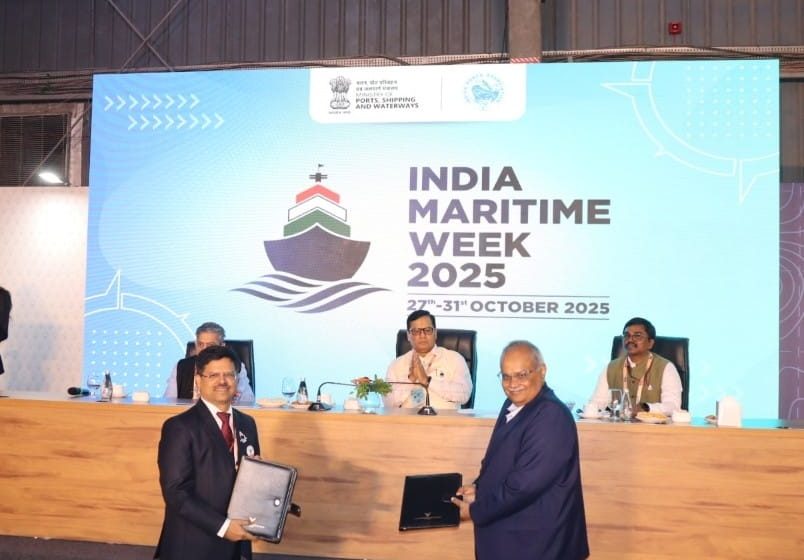Sembcorp will collaborate with VO Chidambaranar and Paradip port authorities to develop an integrated green hydrogen and ammonia ecosystem, covering production, storage, handling, and export infrastructure in and around the ports.
Singapore-headquartered Sembcorp Industries has signed non-binding memoranda of understanding (MoUs) with VO Chidambaranar Port Authority and Paradip Port Authority to advance green energy collaboration in India’s maritime sector. The agreements were formalised during the recently concluded India Maritime Week (IMW) 2025, held in Mumbai from 27 to 31 October.
Inkings took place in the presence of Sarbananda Sonowal, Union Minister for Ports, Shipping and Waterways. Under the MoUs, Sembcorp will work with the two port authorities to develop an integrated green hydrogen and ammonia ecosystem, encompassing production, storage, handling, and export infrastructure in and around the ports. The projects will be executed through Sembcorp’s subsidiaries.
The collaboration aligns with India’s Net Zero by 2070 commitment, which includes a target to reduce carbon emissions per tonne of cargo by 30 per cent by 2030 and 70 per cent by 2047. The maritime sector has been identified as a key driver of climate action under this framework.
Through the National Green Hydrogen Mission, the Central Government has designated VO Chidambaranar, Paradip, and Deendayal Ports as green hydrogen hubs. These hubs are expected to anchor a clean-fuel economy, with over 12 million metric tonnes of green hydrogen-based e-fuel capacity announced nationwide. Ports are emerging as strategic centres for production, bunkering, and exports, driving industrial growth and green employment.
Kandla Port recently launched India’s first megawatt-scale indigenous green hydrogen facility, while Jawaharlal Nehru Port Authority is leading the shift to zero-emission operations through battery-powered trucks and electric logistics systems.
IMW 2025, billed as the world’s largest maritime gathering, drew over 100,000 participants from 85 countries, including 500 exhibitors, 350 speakers, and 12 concurrent conferences and exhibitions. The event showcased India’s maritime resurgence and its ambition to become a global maritime leader by 2047.


